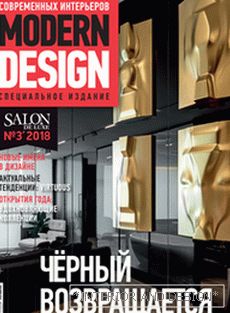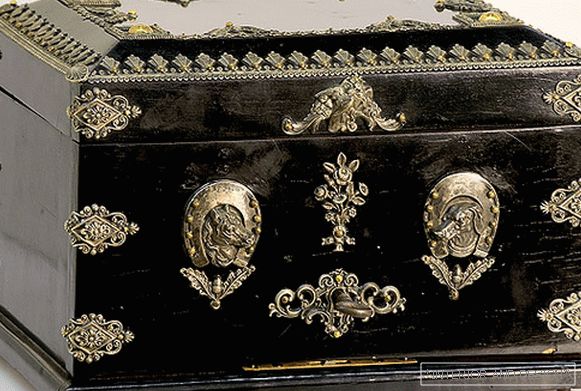Mindcraft is the annual flagship exhibition of Danish design, hosted by the Danish Art Foundation in the framework of Milan Design Week. This year the focus of the exhibition is on the very essence of design and craft.
Related: Queen of Danish Design, Cecilia Manz, designer 2018
Fifteen participants in Mindcraft18, both already quite well-known and novice designers, will show practical interaction with the material, focus on the aesthetic and tangible properties of objects.
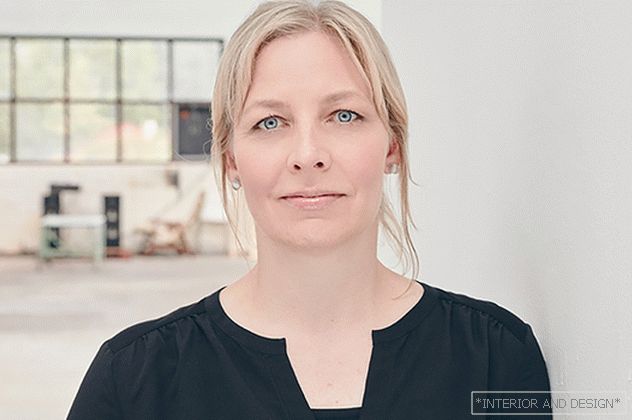 The exhibition curator Ditte Hammerström.
The exhibition curator Ditte Hammerström. “I decided to demonstrate the experimental scene - an area where Danish crafts and design are quite strong today,” says curator Ditte Hammerstram. - For me it is important to highlight the experimental and uncompromising nature of design and craft, the constant study of new ways of addressing the material. These are important properties for the preservation, protection and further development of the industry. ”
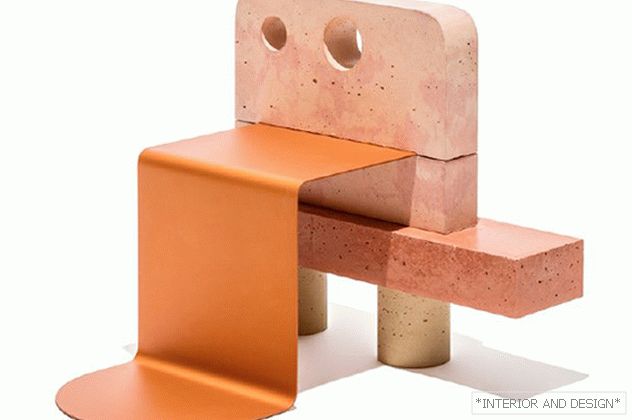 LMA (Lick My Ass), диз. Магнус Петтерсен и Леа Хейн, Pettersen & Hein. Скульптура-стул из литых бетонных блоков, железных труб, стекловолокна и анодированного алюминия. Задача — изучить, какую роль играет мебель в формировании нашей идентичности.
LMA (Lick My Ass), диз. Магнус Петтерсен и Леа Хейн, Pettersen & Hein. Скульптура-стул из литых бетонных блоков, железных труб, стекловолокна и анодированного алюминия. Задача — изучить, какую роль играет мебель в формировании нашей идентичности. 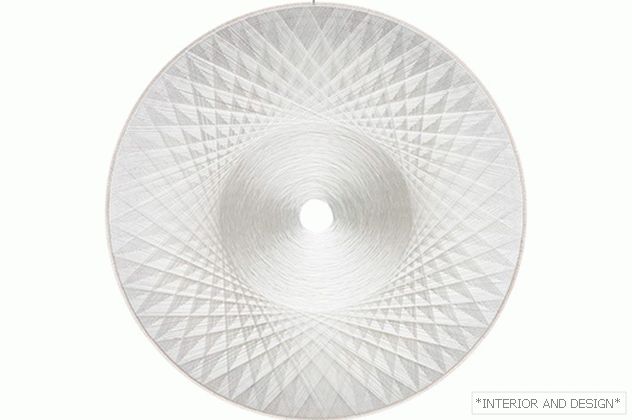 Sun Disc, diz. Cecilie Bendixen. Sound absorbing wicker panel. The threads are stretched on a plywood frame, cut out by a laser. The functional object is considered as an architectural, decorative element, poetic and expressive.
Sun Disc, diz. Cecilie Bendixen. Sound absorbing wicker panel. The threads are stretched on a plywood frame, cut out by a laser. The functional object is considered as an architectural, decorative element, poetic and expressive. 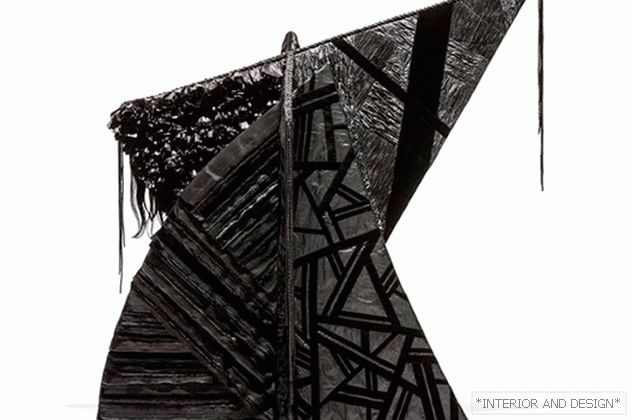 Black Matter, diz. Anya Van Kragh. Textile sculpture with the proportions of the human body looks like an abstract black volume. Sources of inspiration are constructivist sculptures of the 20th century, primitive ritual masks and high fashion.
Black Matter, diz. Anya Van Kragh. Textile sculpture with the proportions of the human body looks like an abstract black volume. Sources of inspiration are constructivist sculptures of the 20th century, primitive ritual masks and high fashion.  Carbon Black, diz. Petra Dalstrom. Thin porcelain plates resembling burnt paper, with a pattern of soot, applied by the flame of a candle. The author considers fire as sculptural material, but alive and uncontrollable.
Carbon Black, diz. Petra Dalstrom. Thin porcelain plates resembling burnt paper, with a pattern of soot, applied by the flame of a candle. The author considers fire as sculptural material, but alive and uncontrollable. 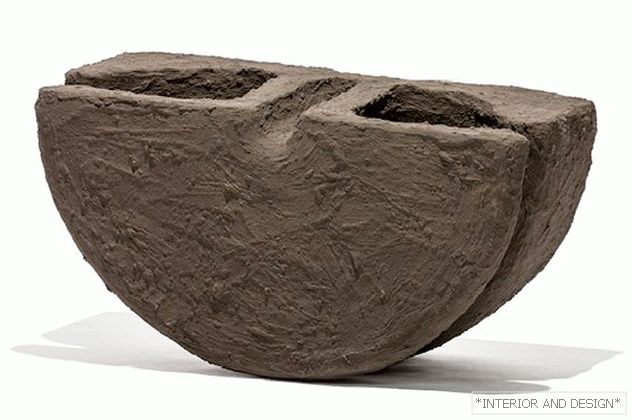 Half Pieces, diz. Carl Emil Jacobsen. Six objects on the framework of expanded polystyrene and steel. Top - fibrous concrete, painted with gray-black natural pigments from the Khanklit rock. Depending on the angle of view changes the depth of color and shade.
Half Pieces, diz. Carl Emil Jacobsen. Six objects on the framework of expanded polystyrene and steel. Top - fibrous concrete, painted with gray-black natural pigments from the Khanklit rock. Depending on the angle of view changes the depth of color and shade. 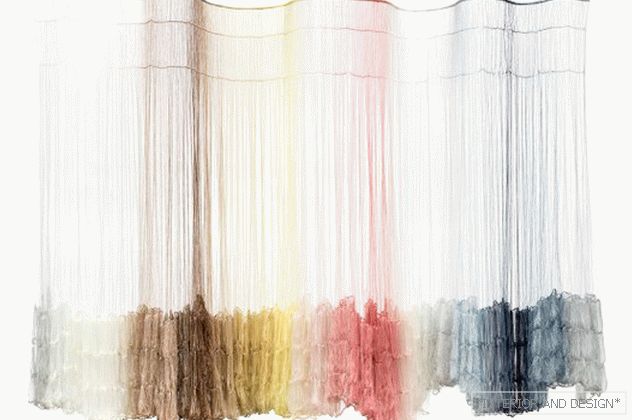 Aurora Borealis, diz. Iben hoi. Knitted sculpture from acrylic fiber. Some threads with phosphorescent properties - being charged with light during the day, shine in the dark. The work was created using several hand knitting machines at once.
Aurora Borealis, diz. Iben hoi. Knitted sculpture from acrylic fiber. Some threads with phosphorescent properties - being charged with light during the day, shine in the dark. The work was created using several hand knitting machines at once. 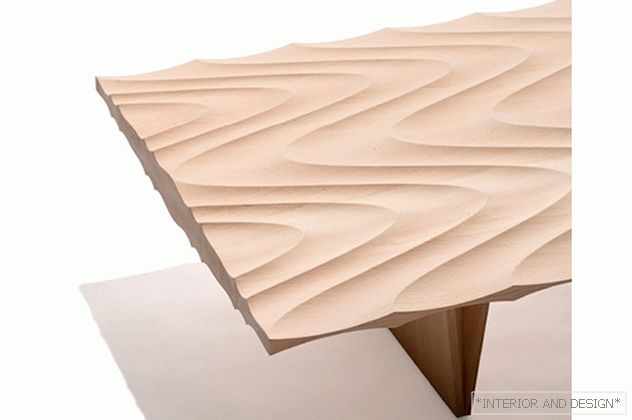 Sakyu, diz. Rasmus Fenhann. Wide bench from Oregon pine solid wood. The undulating structure of the seat can be calculated mathematically or found in nature, as in the Japanese dunes, to which the model name refers.
Sakyu, diz. Rasmus Fenhann. Wide bench from Oregon pine solid wood. The undulating structure of the seat can be calculated mathematically or found in nature, as in the Japanese dunes, to which the model name refers. 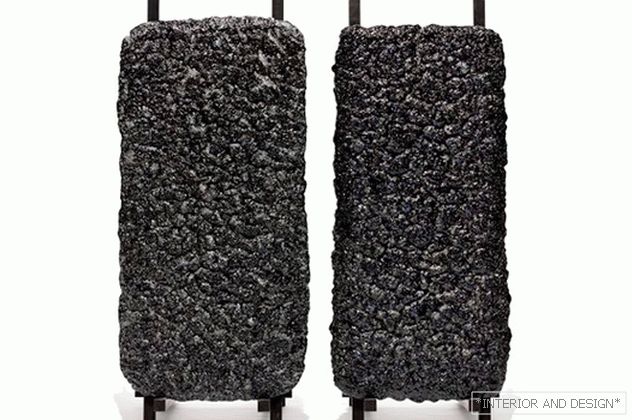 All is Flux, diz. Gitte Jungersen. Objects are covered with layers of ceramic glazes. When fired and rapidly cooled, they behave differently, forming a bubbly surface. The difference in black and blue shades is noticeable only on close examination.
All is Flux, diz. Gitte Jungersen. Objects are covered with layers of ceramic glazes. When fired and rapidly cooled, they behave differently, forming a bubbly surface. The difference in black and blue shades is noticeable only on close examination. 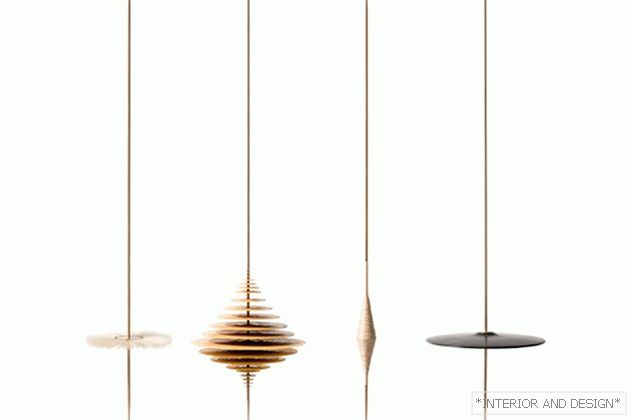 A Family, diz. Casper Keldgor. Five objects were created using various methods, including metal turning, casting and strapping. Each has a unique character, but all are clearly connected, as members of one family.
A Family, diz. Casper Keldgor. Five objects were created using various methods, including metal turning, casting and strapping. Each has a unique character, but all are clearly connected, as members of one family.  Knock them down with a feather, diz. Katrina Borup. Helmet-chainmail from jewelry wire. The drawing resembles monastic arcades and bird feathers, referring to the legend of the martyrs, who in the form of pigeons helped the Italians to win the battle of 1176
Knock them down with a feather, diz. Katrina Borup. Helmet-chainmail from jewelry wire. The drawing resembles monastic arcades and bird feathers, referring to the legend of the martyrs, who in the form of pigeons helped the Italians to win the battle of 1176 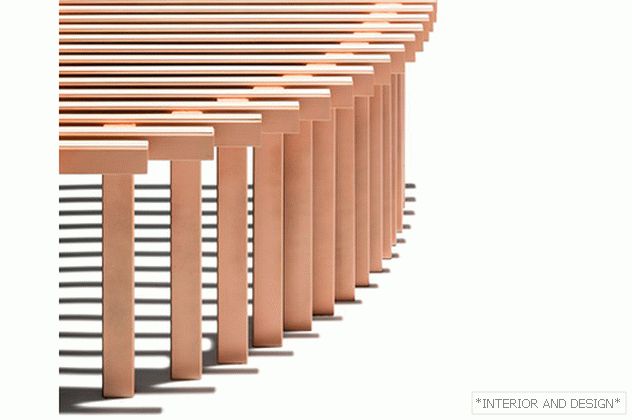 Billy, diz. Kevin Hviid. Round bench with seats for two people on opposite sides. Steel frame lined with wooden slats. The source of inspiration was the cactus with its rounded shoots and the ability to survive in harsh conditions.
Billy, diz. Kevin Hviid. Round bench with seats for two people on opposite sides. Steel frame lined with wooden slats. The source of inspiration was the cactus with its rounded shoots and the ability to survive in harsh conditions. 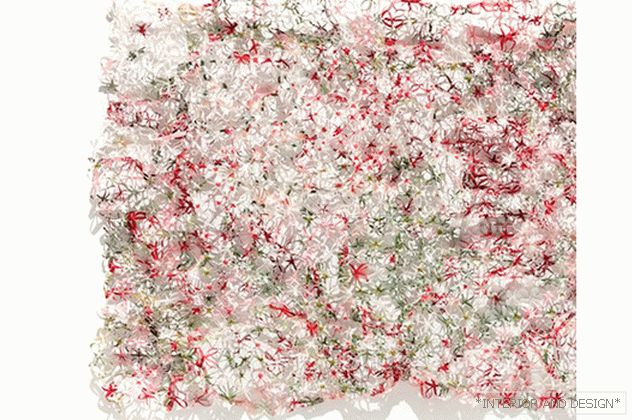 Field of flowers (long winter poem), diz. Louise Campbell. Panel of paper with hand-printed linocut. Elements are cut and glued by hand, forming an openwork canvas.
Field of flowers (long winter poem), diz. Louise Campbell. Panel of paper with hand-printed linocut. Elements are cut and glued by hand, forming an openwork canvas. 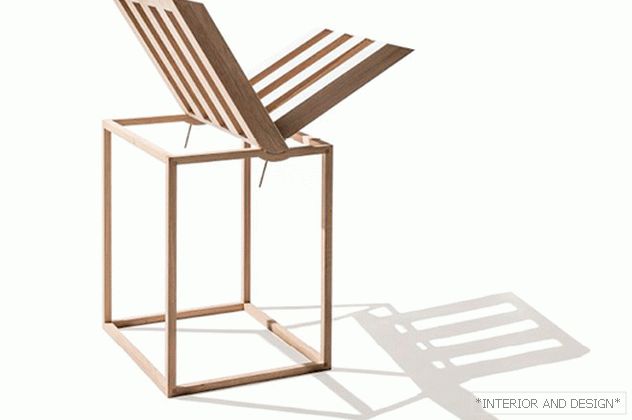 Botanical Furniture Species, diz. Lice Bjerre Schmitt and Sophie Trier Merk, Wednesday Architecture. Sculptural outdoor furniture from solid oak. Due to thin rails, the species are not obstructed, and polished brass linings reflect the beauty of nature.
Botanical Furniture Species, diz. Lice Bjerre Schmitt and Sophie Trier Merk, Wednesday Architecture. Sculptural outdoor furniture from solid oak. Due to thin rails, the species are not obstructed, and polished brass linings reflect the beauty of nature. 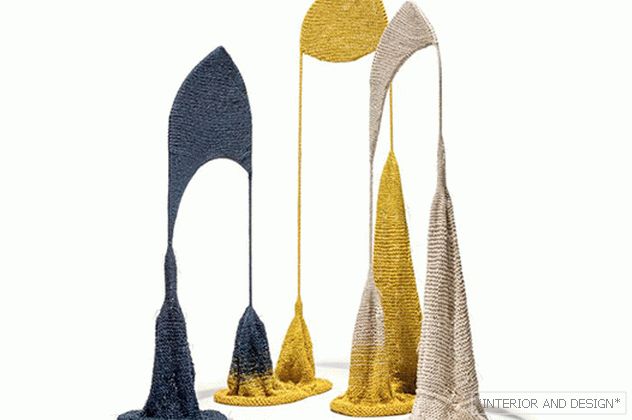 Dissolved into the fabric, diz. Isabel Berglunn. Hand-knitted sculpture of blue, yellow and white threads. The work focuses on the shapes and colors that are the result of a decay process and reflect the flow of life.
Dissolved into the fabric, diz. Isabel Berglunn. Hand-knitted sculpture of blue, yellow and white threads. The work focuses on the shapes and colors that are the result of a decay process and reflect the flow of life. 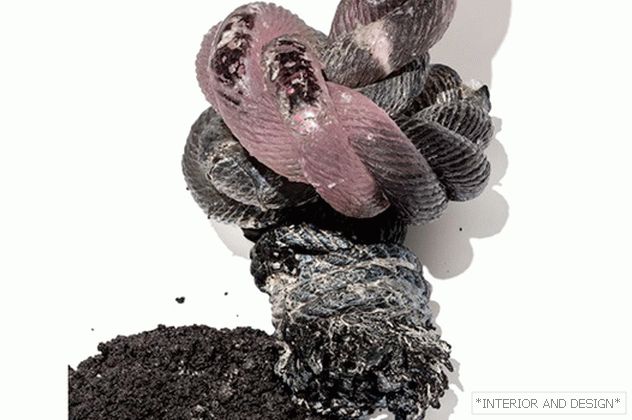 Follow Me, diz. Maria Koshenkova. The sculpture was created using the classic “lost wax” technique. The rope is covered with material to create the shape and burned, leaving a void, which is then filled with molten glass.
Follow Me, diz. Maria Koshenkova. The sculpture was created using the classic “lost wax” technique. The rope is covered with material to create the shape and burned, leaving a void, which is then filled with molten glass. • The exhibition, as in the past year, will be held in the Milan Monastery of San Simpliciano. Piazza Paolo VI, 6, from April 17 to April 22.


